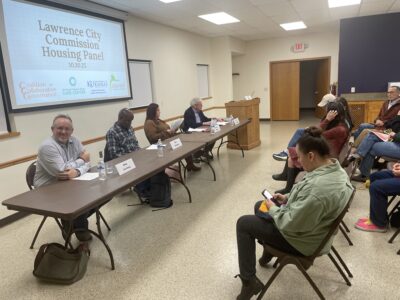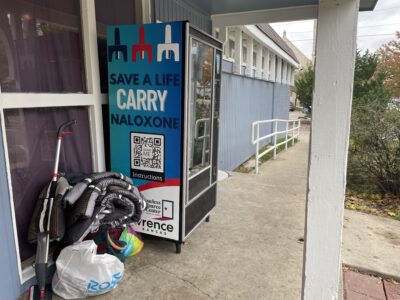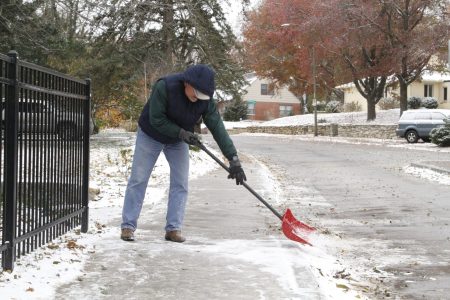Local shelter says dozens of youths falling victim to human trafficking; some city staff to receive training to help

Lawrence City Hall, 6 E. Sixth St., Thursday, July 7, 2016
In the span of a year, dozens of human-trafficking victims are expected to seek shelter at The Willow Domestic Violence Center. And soon, the link to help could be a city employee.
A new initiative will train city employees to recognize human trafficking, with the goal of improving the outcomes of the vulnerable youth who are typically its victims. Leaders at the Willow center said one scenario they see is a girl who has aged out of the foster care system, lacking family and resources.
“Let’s say you’re a girl or very young woman, and a man approaches you: ‘Well, I’ll buy you this, I’ll get your nails done, I’ll have your hair done, you’re beautiful’ — all of these things that she has never had before, and she becomes attached to this man,” said Willow center Executive Director Joan Schultz.
“Then he starts to traffic her, and how is she going to get out, especially if he threatens her with her life?”
Human trafficking is often called a modern form of slavery. With millions of victims, human trafficking is believed to be the third-largest criminal activity in the world, according to the FBI. Traffickers use force, fraud or coercion to control victims, and crimes include forced labor, domestic servitude and commercial sex trafficking.
The training aims to help get more people out of those scenarios by making city employees aware of the prevalence of human trafficking and how to recognize it. The training, which begins this month, is being conducted by the Willow center in conjunction with the Lawrence Police Department.
Earlier this year, Mayor Leslie Soden asked that human-trafficking training be provided for certain city employees. Soden said that with the level of public interaction some employees have, she thought it would be good for them to know what to watch for.
“Our city employees do a lot of work with the public, so I think it would just be a good idea to know of any red flags or warning signs in case someone might be the victim,” Soden said.
Six sessions of the two-hour training are scheduled. To begin with, several employees in the city clerk’s office and the majority of fire and medical department staff will receive the training, according to Assistant City Manager Diane Stoddard. More city staff will be offered the training in the future.
The training may come at an opportune time. Schultz expects the number of human-trafficking victims who seek shelter at the center to approximately double in the span of a year. During the center’s last fiscal year, which began in July, Schultz said the center saw about 45 human-trafficking victims. She said the center is on track to shelter about 90 human-trafficking victims once the center’s fiscal year ends this summer.
Schultz attributes that increase mostly to people being more aware of human trafficking and the services that the Willow center offers, but also said she thinks it’s possible there’s been a rise in the number of traffickers.
In the United States, people vulnerable to trafficking include those in foster care, the juvenile justice system, and runaway and homeless youth, according to a U.S. State Department report. Other vulnerable populations include migrant laborers, foreign domestic workers and people with limited English proficiency.
Many of those trends hold true for Lawrence. Schultz said in addition to former foster children, other common victims are youths, including boys, who are homeless or in poverty. Schultz said virtually all of the human-trafficking victims who come to the center have been victims of sex trafficking. Last year, she said only two of the human-trafficking victims were forced labor.
Human-trafficking victims who seek help at the Willow center are provided shelter as well as peer counseling and mental health services for trauma, Schultz said.
“This trauma is far-reaching and the wounds are deep,” Schultz said. “Not to say (domestic violence) isn’t, but this is a different kind of double trauma. Many times a safe place to be is very important. And a direction out.”
Cases that are actually reported to the Lawrence Police Department are far fewer than those handled by Willow. In 2016, four human-trafficking cases were reported, and so far in 2017 one case has been reported, which had two victims, according to Sgt. Amy Rhoads, spokeswoman for the department.
Rhoads said the police department’s part in the training for city employees will include an explanation of the state statutes pertaining to human trafficking, strategies for responding to human trafficking and a discussion of cases in Lawrence. Detectives will also talk about indicators of human-trafficking perpetrators and victims, she said.
Stoddard said the first human-trafficking training sessions for city employees will begin at the end of the month.







